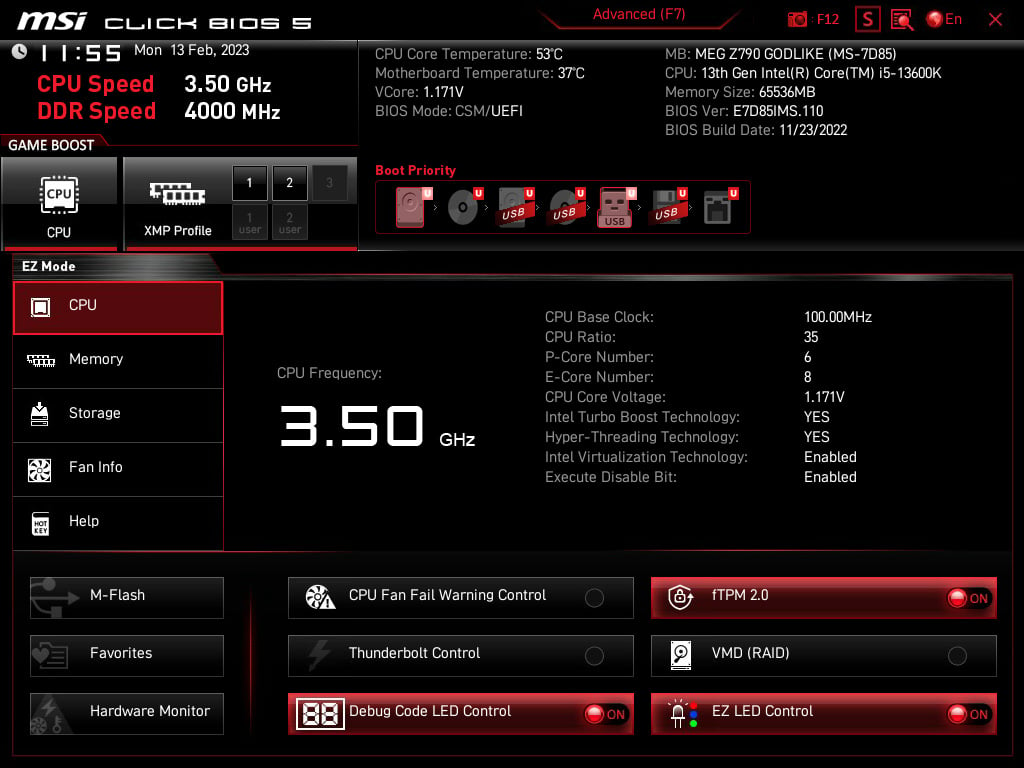Navigating a motherboard’s BIOS can be a cumbersome and intimidating task, particularly for those new to tinkering with their PC. Although, ease-of-use and legibility are both qualities that even seasoned system builders can appreciate. With this in mind, the launch of Click BIOS X alongside MSI Z890 and X870 motherboards is a welcome, if long overdue update.
During my visit to MSI’s motherboard factory in Shenzhen, China, the company was keen to emphasise the efforts put towards crafting Click BIOS X. Having gone hands-on with the firmware since this sneak peek, in my MEG Z890 Unify-X and MAG X870 Tomahawk WiFi reviews, I’m happy to say the result is a marked improvement over what came before.
From 5 to X
That’s not to besmirch Click BIOS 5 by any means. Even now, there’s no denying that it’s a competent piece of firmware. It certainly gave me no qualms during my MSI B650M Project Zero review. Furthermore, it’s not so different in appearance that it provides fond memories of tinkering with Click BIOS 4 on my MSI Z97 Gaming 5. Shout out to my Core i7-4790K, which proved an invaluable companion for almost a decade.
However, the 4:3 aspect ratio, meagre resolution, and general design do show their age relative to competitors. To put it simply, the problem lies with form not function.
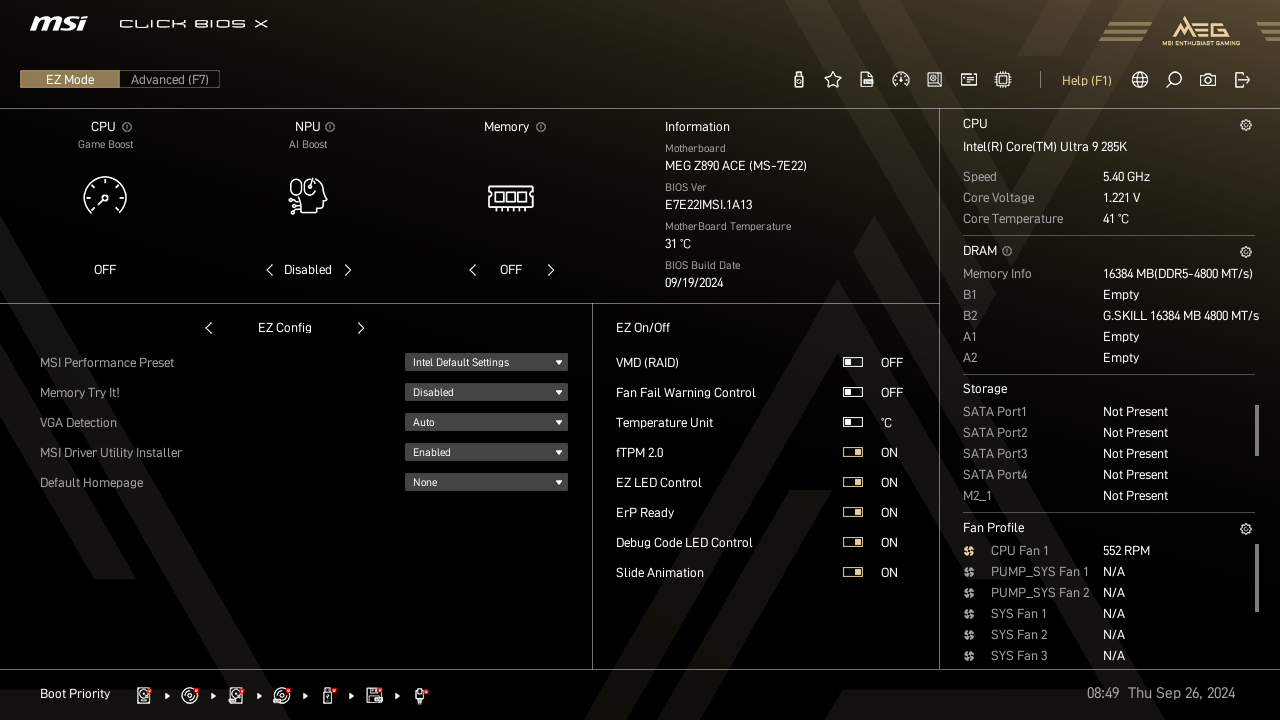
Enter Click BIOS X, a markedly different approach for the modern age. Gone are the black-and-red accents of yesteryear, replaced with colour schemes matching each of MSI’s motherboard series: MEG, MPG, and MAG. Running Click BIOS X on the likes of MEG Z890 Ace, luxurious black-and-gold tones greet you. Switch to an MPG or MAG model, though, and you’ll have a pink or green GUI, respectively.
More pertinently, this is a marked departure in design, layout, and sharpness. Proper widescreen support affords MSI the ability to abandon bulky buttons in favour of a sleek and spacious interface. It also displays at 1080p too, a welcome touch. Diving beneath the surface, though, and you’ll find all the same features and more you’ve come to expect from the company’s motherboards.
With this in mind, I’d like to highlight a few of the more interesting and useful options, as well as explore where MSI could make changes to further improve usability.
EZ Mode
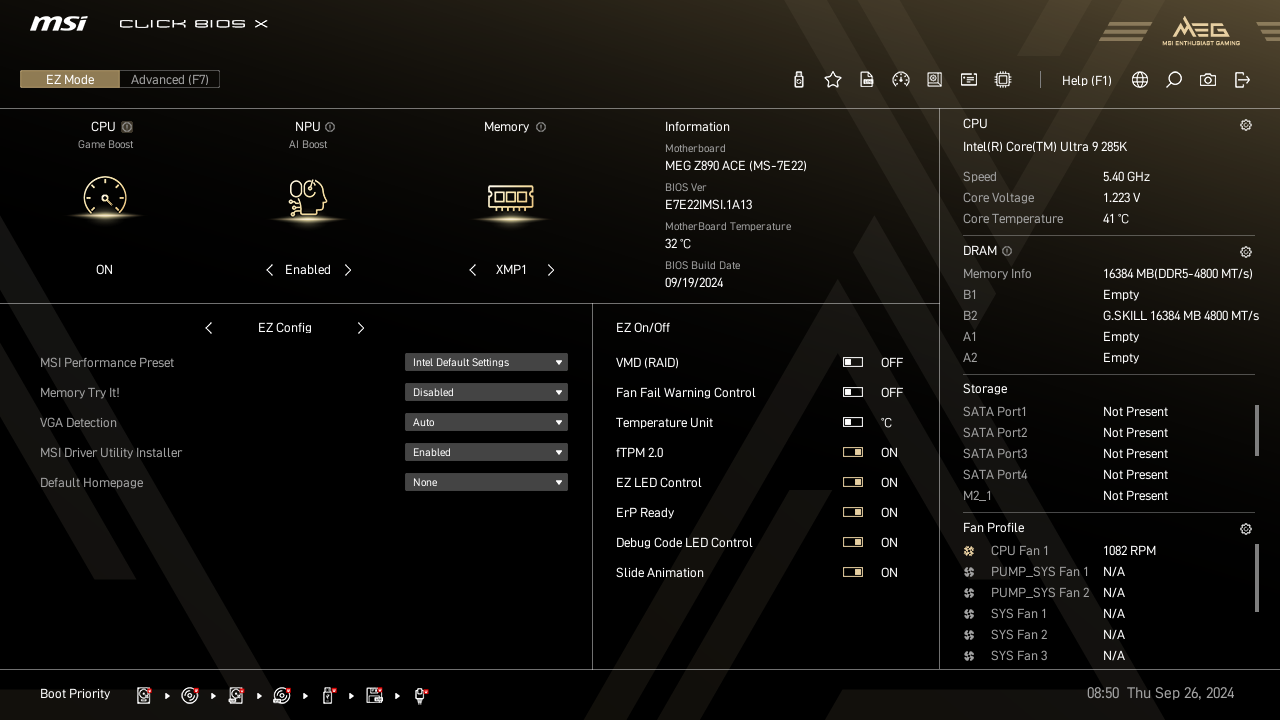
Both one-click CPU and RAM overclocks return under the guise of ‘Game Boost’ and ‘EXPO/XMP’. New for Click BIOS X, however, is NPU (neural processing unit) overclocking. Dubbed ‘AI Boost’, this feature pushes the performance of the AI accelerator on your processor. For now, this is exclusive to Core Ultra 200S chips but AMD will undoubtedly follow suit with future Ryzen models.
While MSI provides informative tooltips for ‘Game Boost’ and ‘Memory’, with clear information on how they affect clock and transfer values, respectively, the company is less descriptive when it comes to AI Boost. A replacement for the generalised “enabled for optimized performance of NPU” would be welcome.
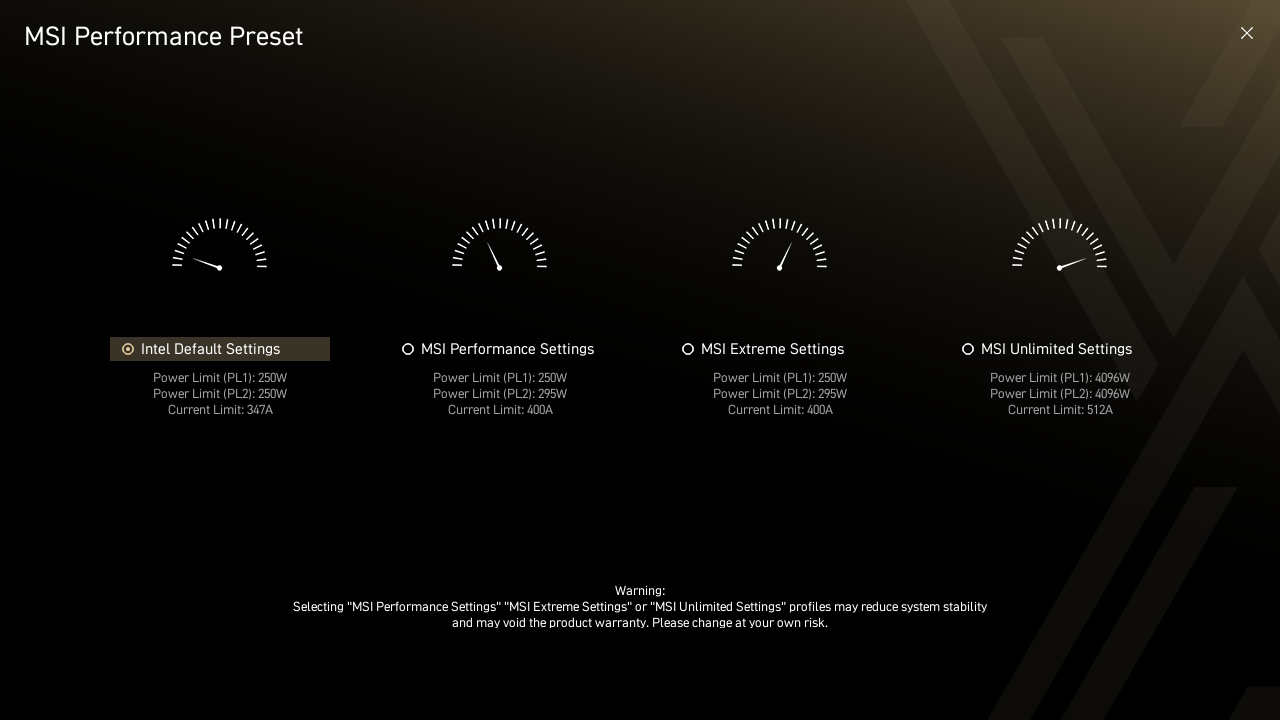
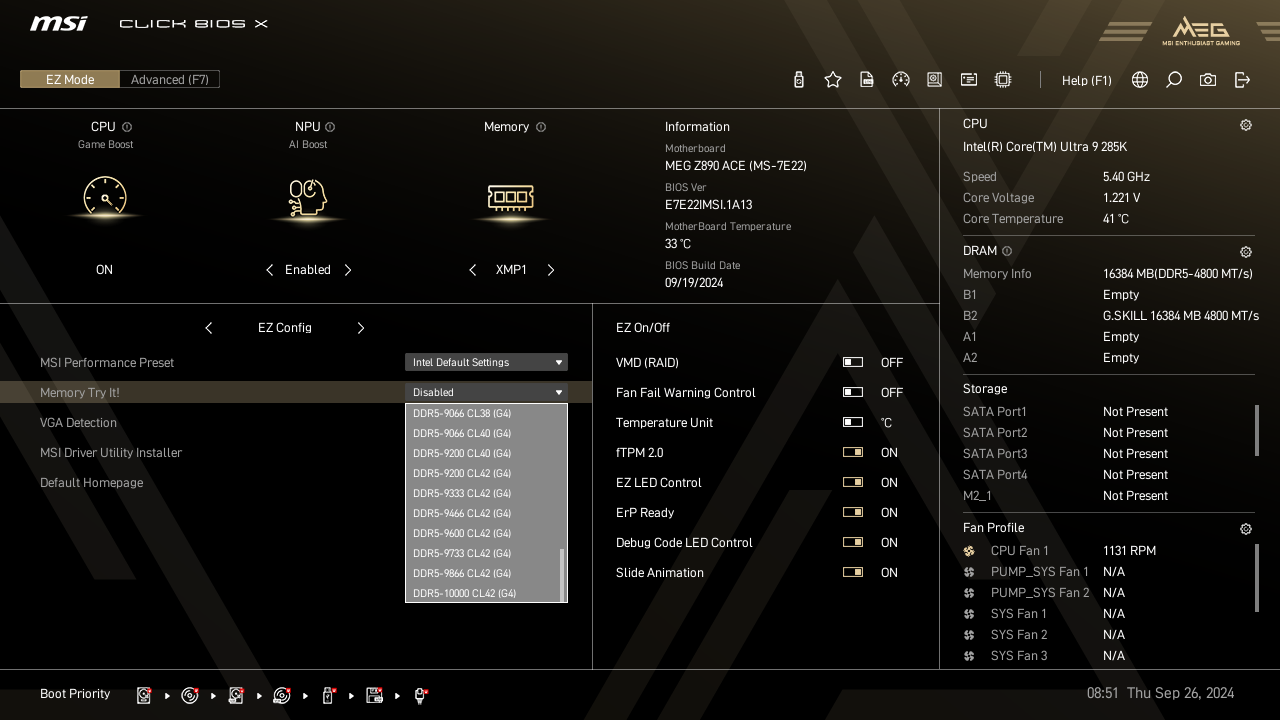
While these are the core one-click options most users should fiddle with, there are several other settings that are easily tuneable in Click BIOS X’s ‘EZ Mode’. From this dashboard, nestled in the ‘EZ Config’ module, it’s easy to adjust power limits, as well as trial timing and transfer speeds through ‘Memory Try It!’.
Mileage will vary depending on the processor at hand when it comes to power adjustments, but ‘Memory Try It!’ can prove fruitful in my experience. It’ll surprise you just how far you can push your RAM, beyond even their EXPO/XMP profiles. Given there’s no risk of damage to your components and Click BIOS X will quickly reset itself if a preset is incompatible with your memory, there really is no harm in… trying it.
Advanced Mode
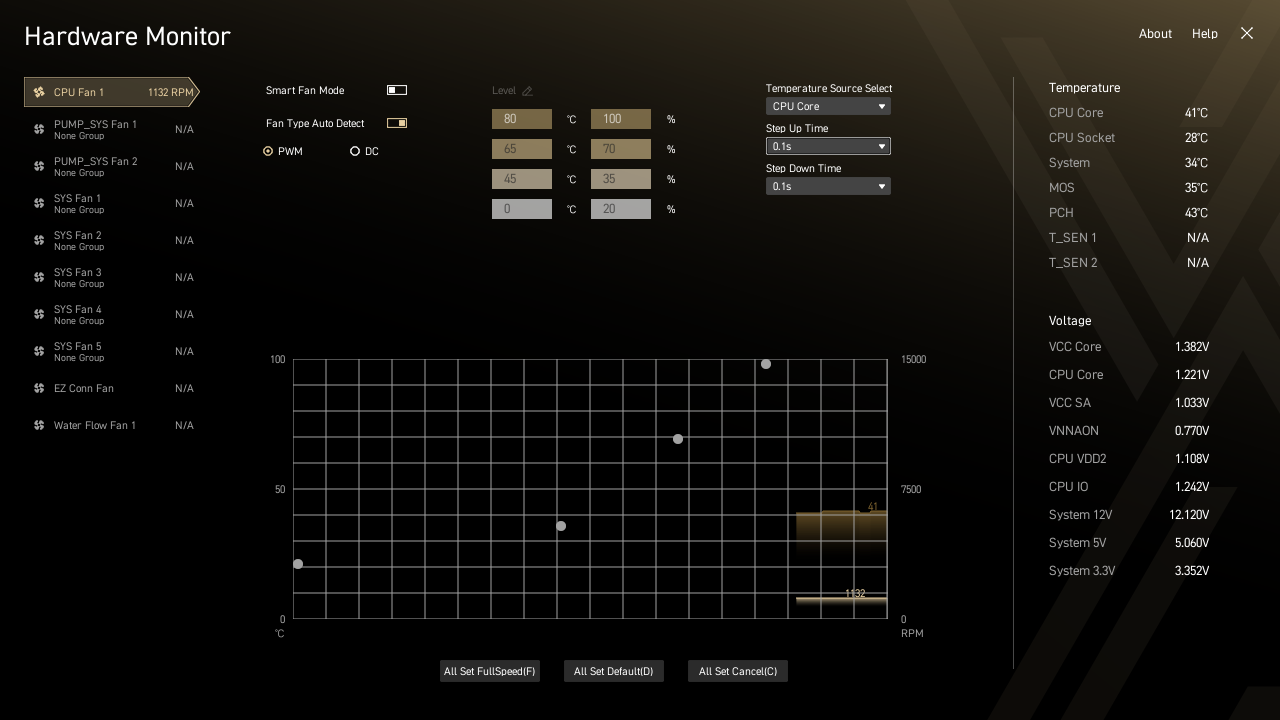
Moving away from the ‘EZ Mode’ dashboard, the work of MSI’s design team is plain to see elsewhere. There’s a newfound elegance to the ‘Hardware Monitor’ with Click BIOS X. Looking back at Click BIOS 5’s iteration of the submenu, the older version appears as though it’s struggling to display the same information. Let alone the fact its graphics are garishly blocky and low-res by comparison.
Click BIOS X’s higher resolution also makes it easier to make micro adjustments with the mouse, should you prefer to do so. Personally, I prefer the new addition of ‘Level’ fields that shift automatically with whatever numeric values you’d like. Easier on the eyes and to use. Nice.
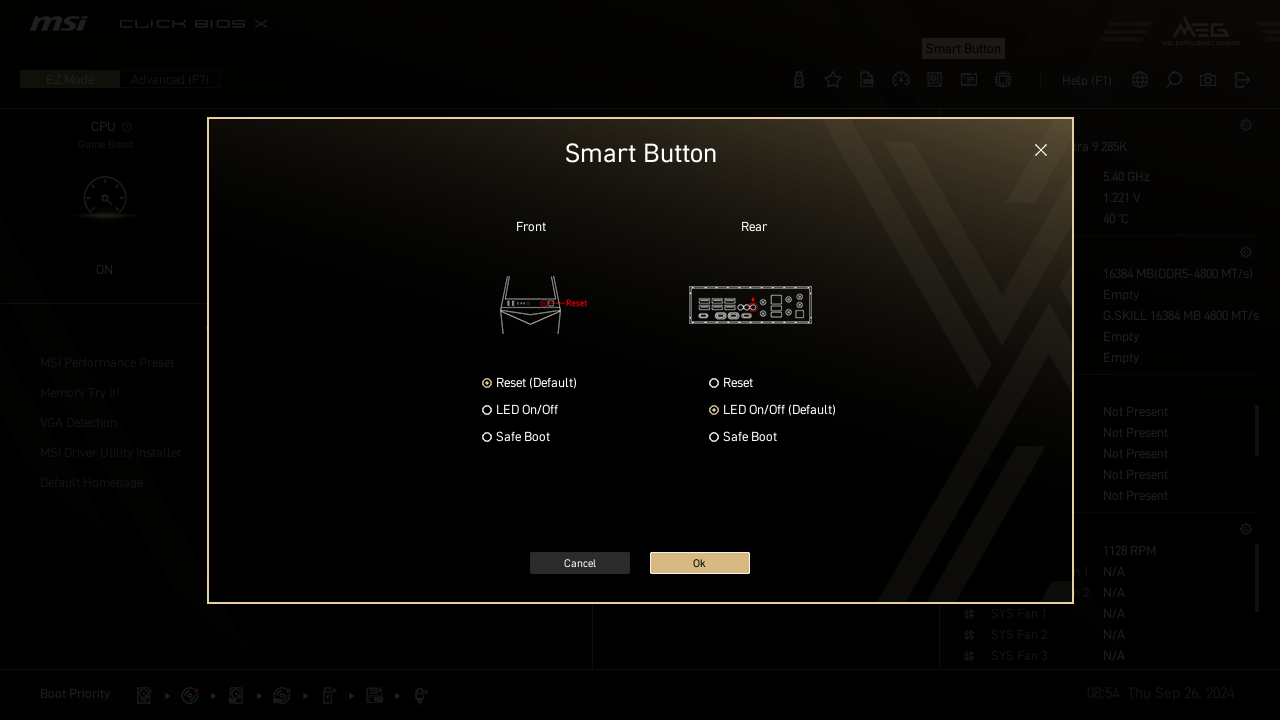
Before shifting gears to more advanced features, I’ll take a moment to discuss ‘Smart Button’. This isn’t a feature available on every MSI motherboard, but its uses are unfortunately anyway. The button can either reset your system, toggle LEDs, or enter safe boot.
While I welcome the ability to easily configure Smart Button, I do wish it had more tricks up its proverbial sleeve. Switching between BIOS on enthusiast boards springs to mind, or serving as additional power button in lieu of one on the PCB. If it means I don’t have to short headers with a screwdriver on a test bench, that’s a mega plus for me.
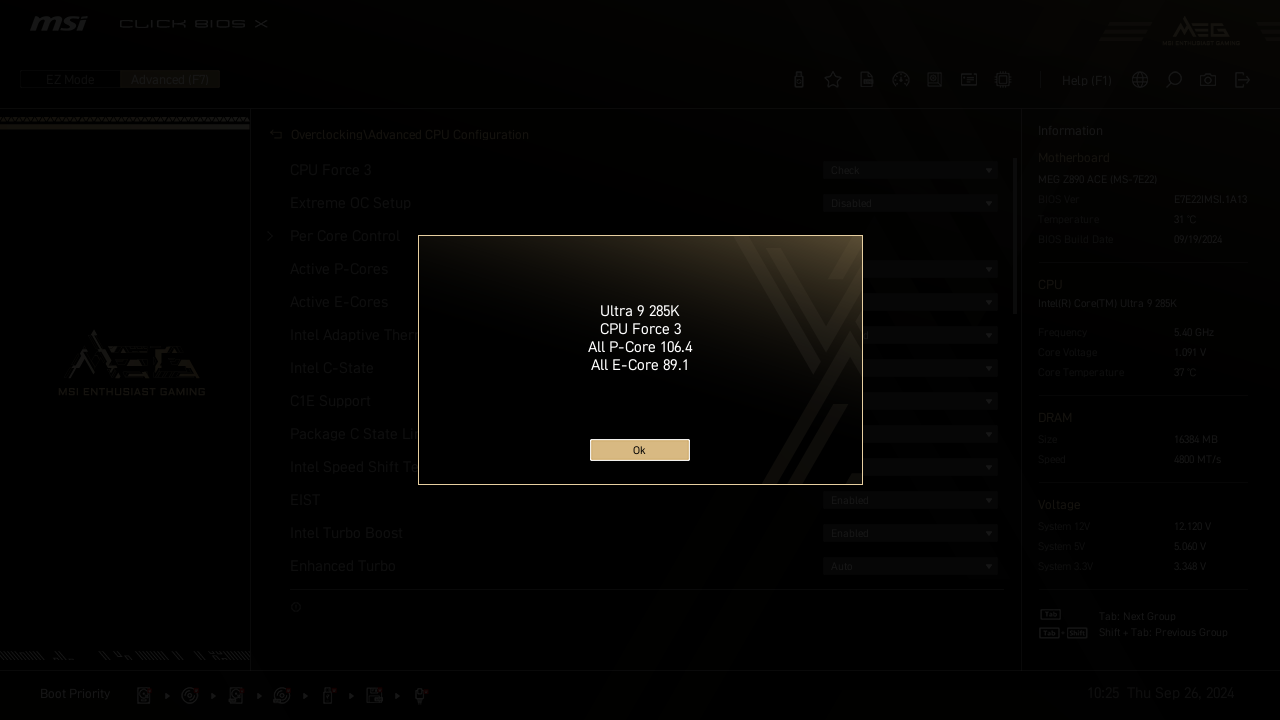
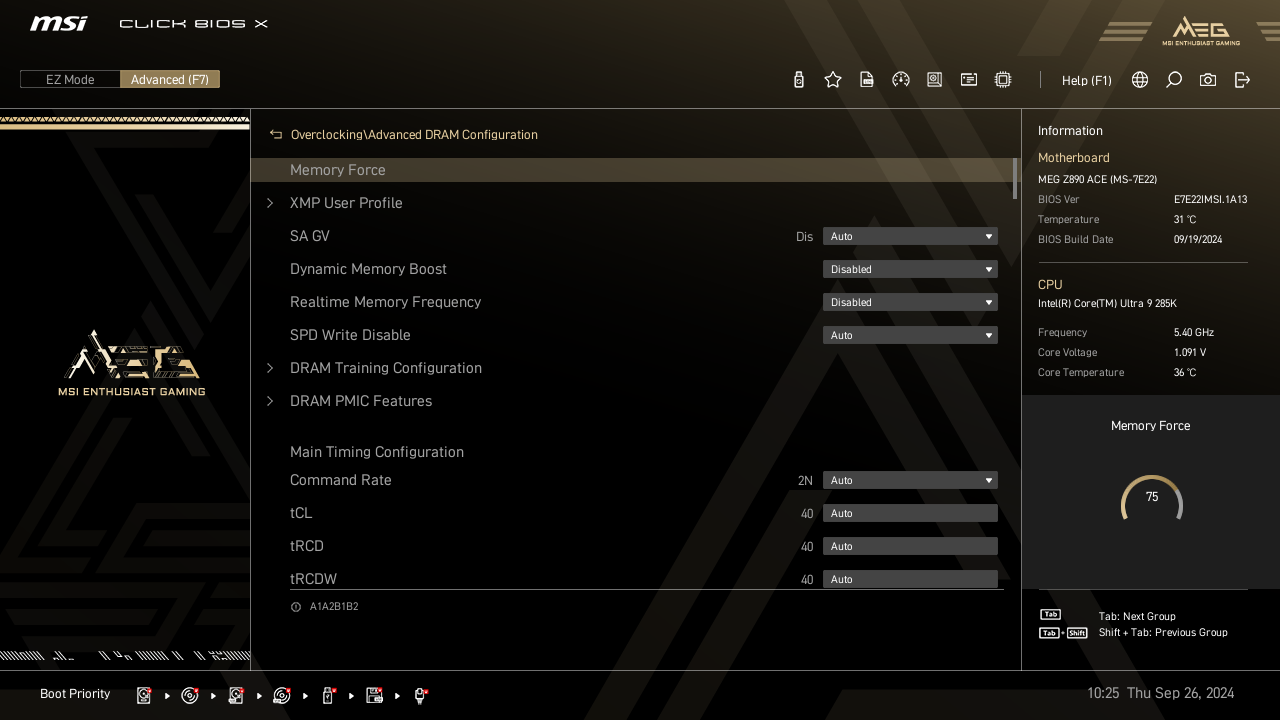
Kicking off the more enthusiast settings, we have ‘CPU Force 3’ and ‘Memory Force’. Exclusive to MEG motherboards, these two forces serve as at-a-glance estimations of how much you’ve maximised the potential of your processor and RAM.
Silicon lottery naturally plays its part in the former, but I do wish MSI was clearer about what these scores correlate to. More specifically, MSI gives no explanation as to how it deduces the scores above for my Core Ultra 9 285K. Context is king, and would be welcome here.
This perspective also applies to Memory Force. While it’s great having a yardstick, I’d appreciate a greater understanding of what my base actually is or refers to.
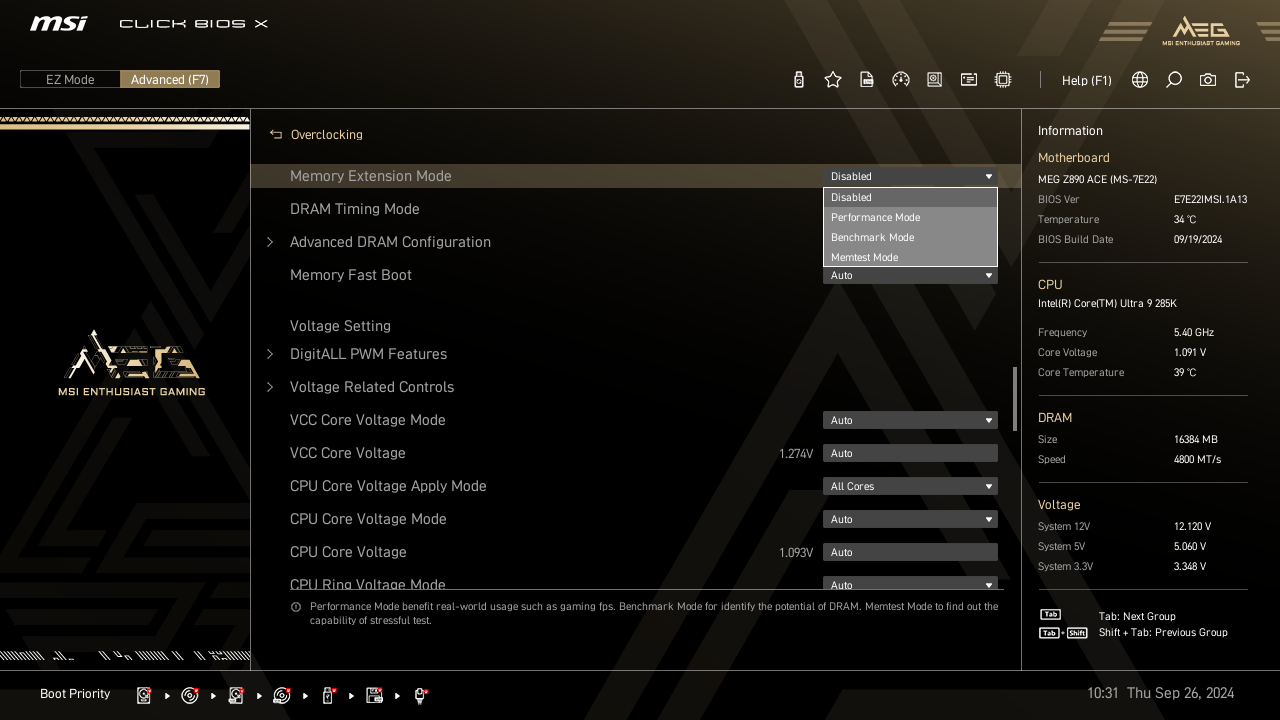
Adjacent to ‘Memory Try It!’ is ‘Memory Extension Mode’. This feature provides three presets to choose from, each aiming to improve transfer speeds and latency for particular scenarios. According to MSI, this can result in improvements of up to 14% using like-for-like timings and clocks.
These settings will primarily benefit memory overclockers looking for a quick and dirty assessment of their RAM sticks. For the rest of us, ‘Memory Try It’ and EXPO/XMP will do the trick.
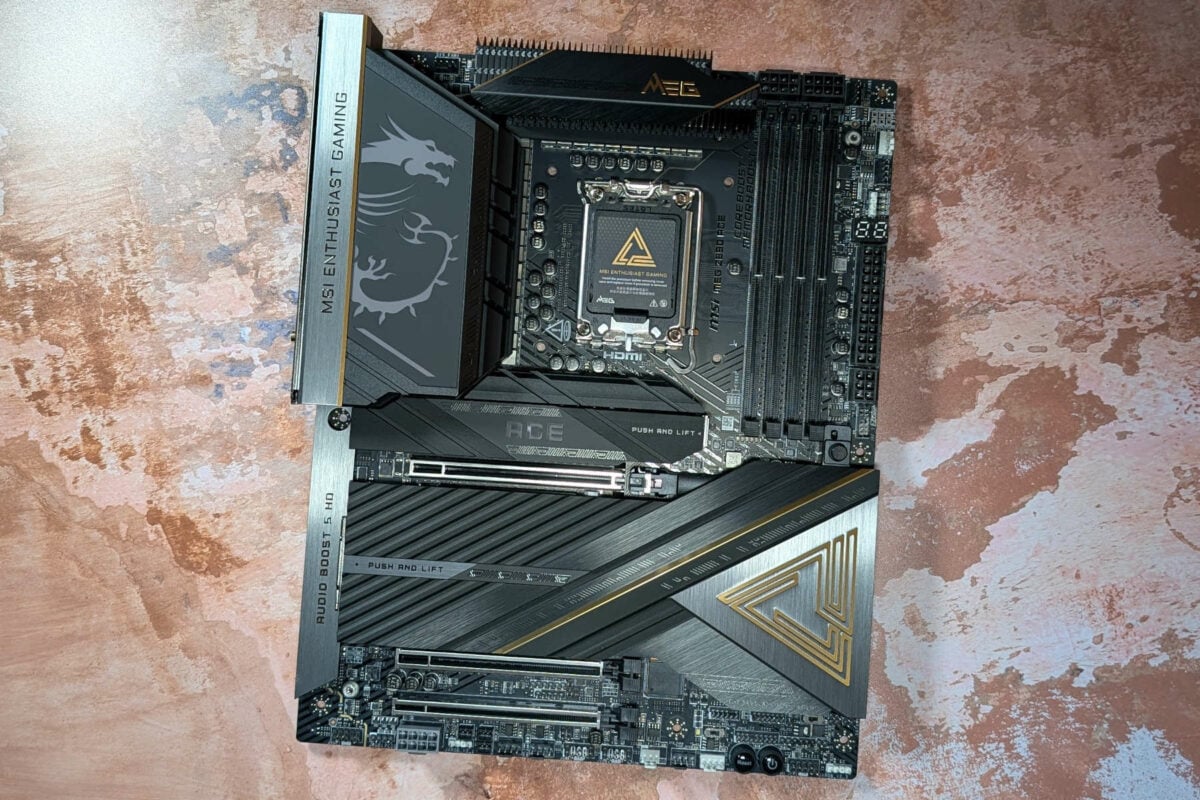
I hope this exploration of Click BIOS X has proven educational and useful to you. You’ll find more on the features and settings I’ve discussed in the motherboard reviews I mentioned earlier in this piece. I’ll also have more critical analysis of other Z890 and X870(E) stock in the near future. So, stay tuned!
